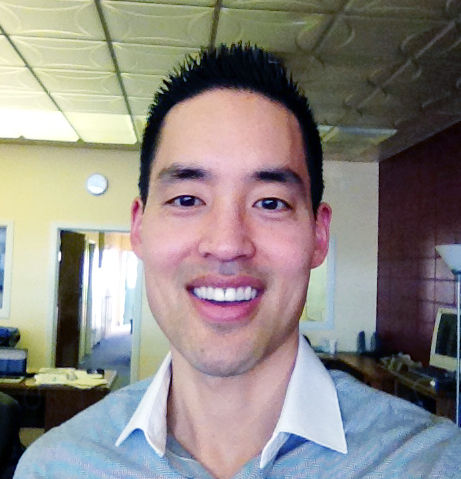Scientists like Ulrik Wisloff have shown that fitness—VO2 max, or aerobic/endurance capacity—is the single best predictor of current and future health. VO2 max is the measure of the maximum volume of oxygen you can use and reflects how well your body takes in and uses oxygen while you exercise.
With that in mind, Wisloff and a team of researchers at the Norwegian University of Science and Technology in Trondheim worked to develop the fitness age calculator, which allows anyone to determine their aerobic capacity and relative fitness age based on their gender, resting heart rate, waist size and exercise routine.
Go to the online calculator at https://www.worldfitnesslevel.org/#/ to determine your fitness age. Gretchen Reynolds, the renowned Phys Ed columnist for the New York Times who first started writing about fitness age last year, was downright giddy when she found out that her fitness age was several years younger than her chronological age.
Reynolds’ latest story about fitness age centered around individuals from this year’s Senior Olympics based off a study done by Wisloff and Dr. Pamela Peeke, who is an assistant professor of medicine at the University of Maryland.
It’s worth noting that Senior Olympians—competitors are 50 years and older—are not professional athletes and many of them did not begin to train seriously until later in life. The study revealed that the athletes’ average chronological age was 68, but their average fitness age was 43. My chronological age is 38, but my fitness age is under 20. What do these numbers mean?
“If we believe in epidemiological data, it will translate into huge differences,” Wisloff said in an e-mail. “For instance, we recently showed that individuals (who) manage to stay at or above the expected fitness age for their age group have about 80 percent less chance of dying from all causes the next 24 years compared with those that had a fitness level below 85 percent of the average for their age group.
“The risk of dying from cardiovascular diseases was two-fold in those having a fitness level below 85 percent of the average for their age group compared with those having a fitness level at or above the average for their age group. However, it remains to be tested in clinical trials. Such trials are of long term and extremely costly. However, we have started one such trial where we exercise/train more than 1,500 people aged 70-77 years old over five years where the aim is to improve fitness and to really test if that gives more and healthier years (ntnu.edu/cerg/generation100).”
Wisloff didn’t expect such a huge difference between the athletes’ chronological age and fitness age.
“These are not professional athletes and the difference shown is enormous and should theoretically translate into huge differences in expected (life) longevity,” he said.
Reynolds, who is the author of The First 20 Minutes: Surprising Science How We Can Exercise Better, Train Smarter, Live Longer, has run two marathons and has over 10 centuries to her credit—that’s a 100-plus mike bike race—said you don’t have to come close to running a marathon to achieve peak optimum health.
“It’s not like you have to run a marathon to improve your endurance capacity,” said Reynolds, who no longer races competitively but does run everyday. “If someone is in poor shape and starts walking regularly, their endurance capacity improves dramatically. By increasing your activity, you’ll improve your aerobic capacity. It’s one of the easiest things to do. Exercise is the best medicine.”
Unfortunately, as Reynolds noted, statistics show that up to 75 percent of Americans almost get no exercise at all. Reynolds said one doesn’t even have to think of increased activity as exercise.
“Call it going for a walk and time for yourself,” she said. “Gardening, taking the dog for a walk or jog, anything will translate into improved endurance capacity if you haven’t been doing it before. And endurance capacity seems to have a profound effect on how long and how well we live. There is very good science showing your aerobic capacity is the best indicator of how long you’re likely to live, and nothing else seems to matter nearly as much. Even people who smoke and have a real good aerobic capacity are less likely to die than people who don’t smoke and have less aerobic capacity.”
Reynolds obviously wasn’t encouraging anyone to smoke; rather, she was emphasizing the point that nothing measures up to endurance capacity as the best general indicator to measure one’s life span.
The take-home message coming out of the study in her article is this: You can dramatically slow down the aging process, and best of all, you don’t have to run a marathon, cycle 100 miles or do CrossFit to achieve optimum health.
Contrary to popular belief, you don’t have to hurt yourself to get healthy. Now, I’m all for pushing the limits of the human body—you won’t find a greater proponent of consistently taking part in hard, physical training sessions to test a person’s resolve than me—but I know it’s not for everyone.
I never thought I would say or write this, but the phrase “No pain, no gain,” is so yesterday. Just. Get. Moving. Stand up more, sit down less. If you’re walking just 10 to 15 minutes a day, you’re still lapping everyone else on the couch. So how important is fitness age?
“In my view, this is the best measure of a person’s biological age as peak oxygen uptake reflect the function of the lungs, heart, blood vessels and muscles,” Wisloff said.










